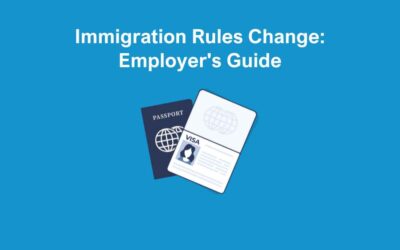The Bradford Factor is a widely used HR tool designed to measure and manage employee absenteeism. This formula is particularly effective in highlighting the disruptive impact of short, frequent absences compared to prolonged absences. However, while this can be an invaluable resource, it also has its critics. Let’s explore the pros and cons to understand how this metric fits into modern absence management strategies.
What is the Bradford Factor?
Before diving into the benefits and drawbacks, it’s essential to define what this is. The Bradford Factor formula allows you to assign a relative weighting to an employee’s unplanned absences.
A weighting reflects the impact that an event—such as an employee’s absence—has on the daily operations of your business.
The higher the weighting score, the greater the anticipated effect on business activities.
Unplanned absences typically include situations such as:
- Sickness
- Medical appointments
- Family emergencies
- Unauthorised absences
The formula calculates a score based on the number and frequency of absences using the equation:
The resulting score helps organisations identify patterns of absenteeism and make data-driven decisions.
This Formula was developed in the early 1980s by researchers at the Bradford University School of Management in the United Kingdom. The tool was part of broader studies on employee absence and its effect on organisational efficiency.
The Pros of the Bradford Factor
1. Highlights Absenteeism Patterns
This method excels at identifying employees with frequent, short-term absences. This is crucial for businesses where unplanned absences can disrupt workflows, such as in customer service or manufacturing roles.
2. Encourages Accountability
When employees are aware of how the calculation works, it can encourage them to be more conscious of their attendance. Knowing that frequent absences will impact their score often promotes better planning for time off.
3. Provides Objective Metrics
The tool offers an unbiased, quantitative way to measure absenteeism, removing the potential for subjective judgement by line managers. This is particularly valuable when assessing employee performance during appraisals.
4. Supports Early Intervention
By flagging problematic absence trends, the Bradford Factor enables HR teams to intervene early. Whether it’s offering support for personal challenges or addressing potential abuse of the system, early action can prevent further issues.
5. Customisable Parameters
This method can be tailored to suit an organisation’s needs. HR teams can adjust the monitoring period or set different thresholds depending on the company’s absence management policies.
The Cons of the Bradford Factor
1. Potentially Punitive
One of the most common criticisms is its potential to penalise employees with genuine health conditions. For example, individuals with chronic illnesses or disabilities may have higher scores despite legitimate reasons for their absences.
2. Lacks Context
The formula does not account for the reasons behind absences. Employees dealing with mental health challenges or recovering from surgery might be unfairly flagged as problematic due to their higher scores.
3. Could Impact Morale
If employees perceive the Bradford Factor unfair or overly strict, it could harm morale. A rigid application of this metric may foster resentment, particularly if staff feel they are being punished for unavoidable absences.
4. Overlooks Long-Term Absences
While this focuses on short, frequent absences, it often ignores the impact of long-term absences, which can also disrupt operations. This narrow focus may result in a less comprehensive understanding of attendance trends.
5. Requires Regular Monitoring
To be effective, this demands regular review and analysis. Without active oversight, scores may become outdated, leading to misinformed decisions by HR teams or managers.
Bradford Factor Trigger Points
In general, a lower Bradford Factor score means employees are less likely to face warnings or disciplinary action. Many organisations establish what is known as a ‘trigger point’—the maximum score an employee can reach before a formal review or investigation into their absence is initiated. These trigger points serve as a threshold for addressing absenteeism concerns within the workplace.
High scores, typically 500 or above, often suggest that an employee’s use of sick days may be problematic, potentially leading to immediate disciplinary action.
However, it’s crucial to note that each organisation sets its own trigger points to define what they consider an unacceptable level of absence. The actions taken in response to high scores will also vary depending on company policies and procedures.
Is the Bradford Factor Right for Your Organisation?
Deciding whether to use the Bradford Factor depends on your organisation’s specific needs. For companies seeking a straightforward tool to address frequent absenteeism, it can be highly effective. However, it is essential to balance its application with empathy and flexibility to avoid alienating employees.
Consider pairing this with other HR strategies, such as return-to-work interviews or employee well-being programmes. This holistic approach ensures that absenteeism management supports both operational goals and employee welfare.
Optimising Absence Management with the Bradford Factor
If you choose to implement the Bradford Factor, here are some best practices to ensure its effectiveness:
- Educate Your Team: Clearly explain how the Bradford Factor works and why it’s being used.
- Set Fair Thresholds: Tailor the formula to suit your organisation and avoid disproportionately high scores for minor absences.
- Combine with Support Systems: Offer resources such as mental health support or flexible working arrangements to help employees manage their circumstances.
- Review Regularly: Monitor scores consistently and adapt your policies based on data insights and employee feedback.
Conclusion
The Bradford Factor is a powerful tool for managing absenteeism, but it’s not without its challenges. By understanding its pros and cons, professionals can implement this metric in a way that balances operational efficiency with employee fairness. When used alongside supportive measures, this can help create a healthier, more productive workplace.
By addressing both the advantages and criticisms of the Bradford Factor, this blog provides valuable insights to consider its implementation. Whether you’re aiming to optimise attendance management or foster employee well-being, a thoughtful approach will ensure the best outcomes for your organisation.







